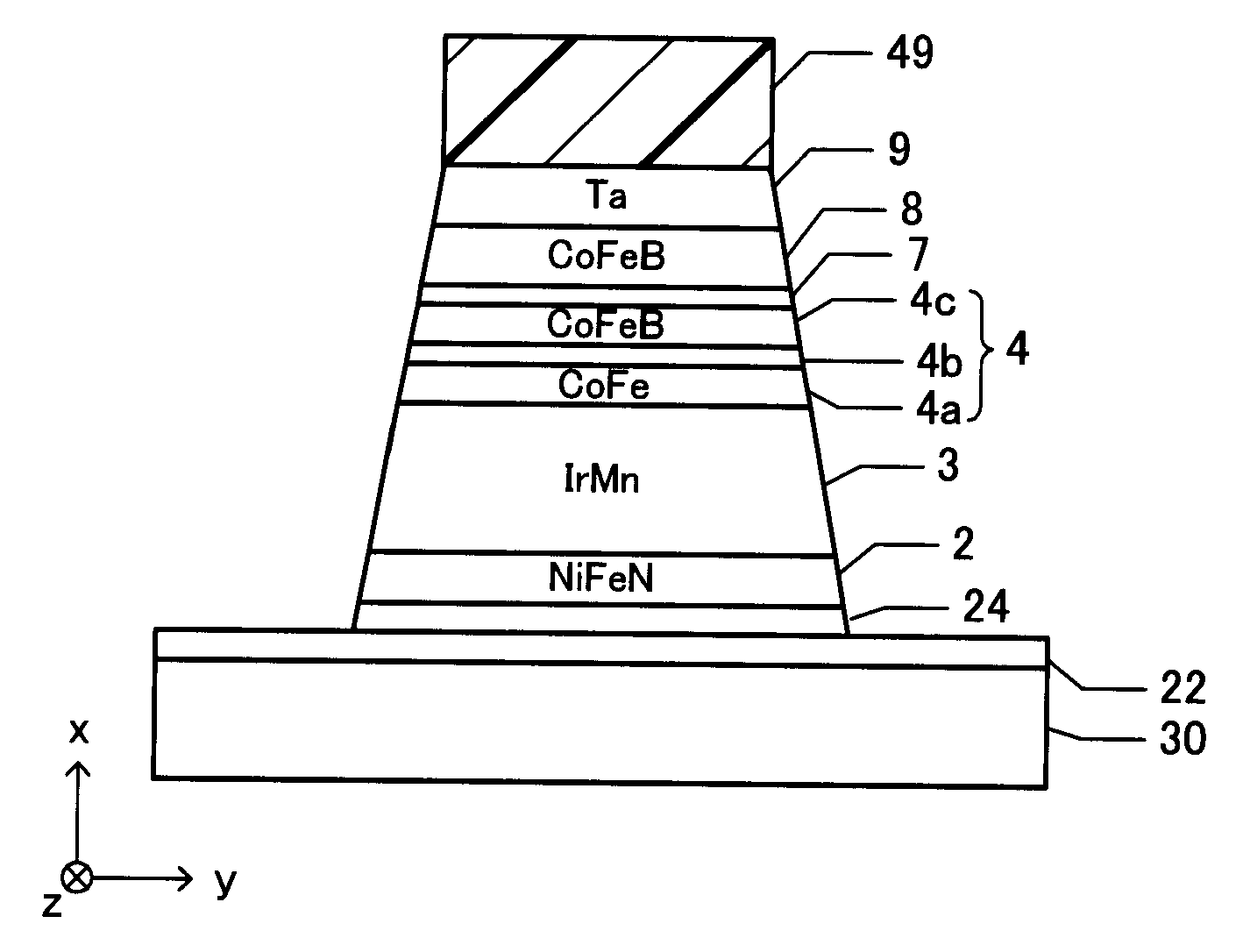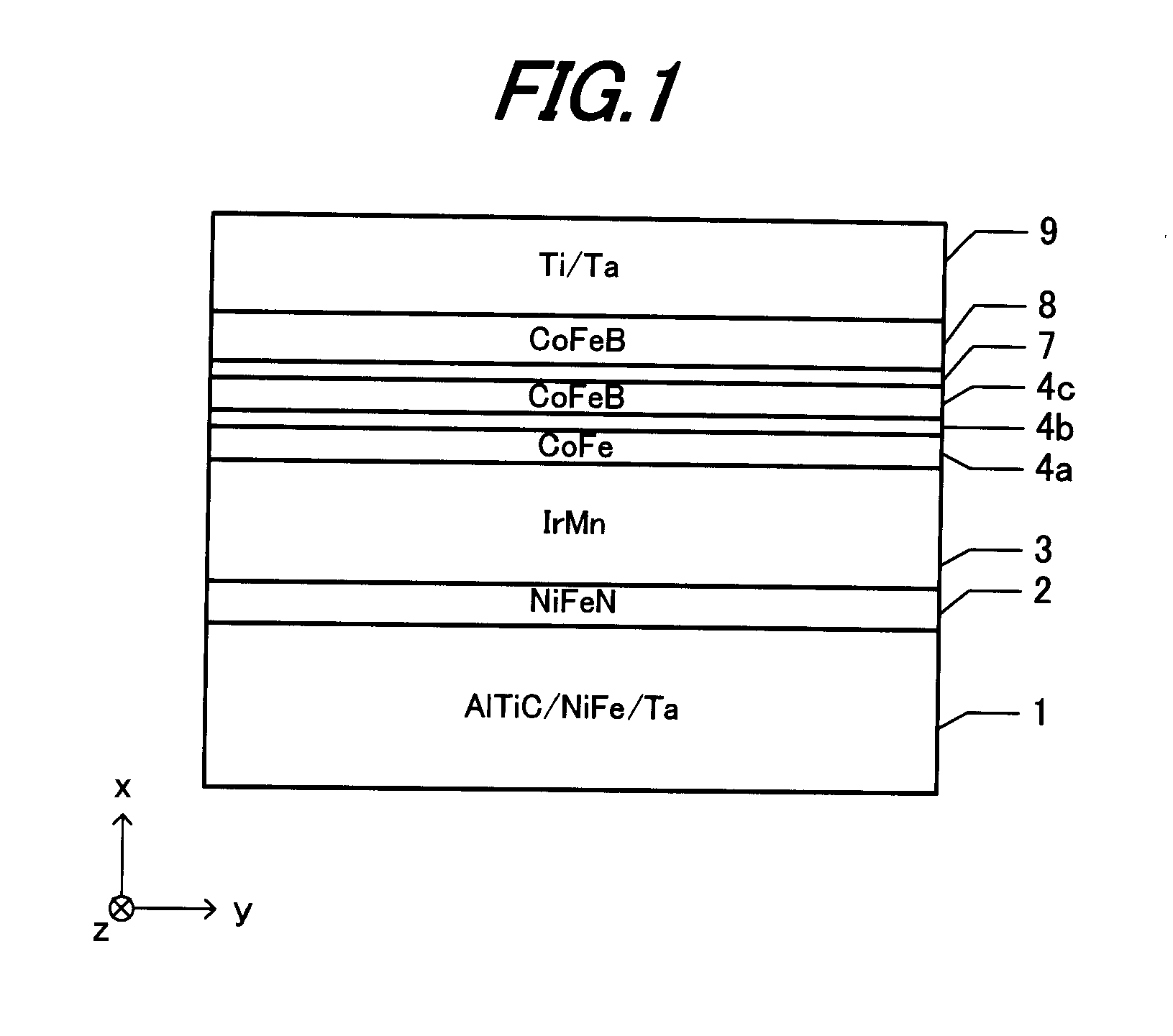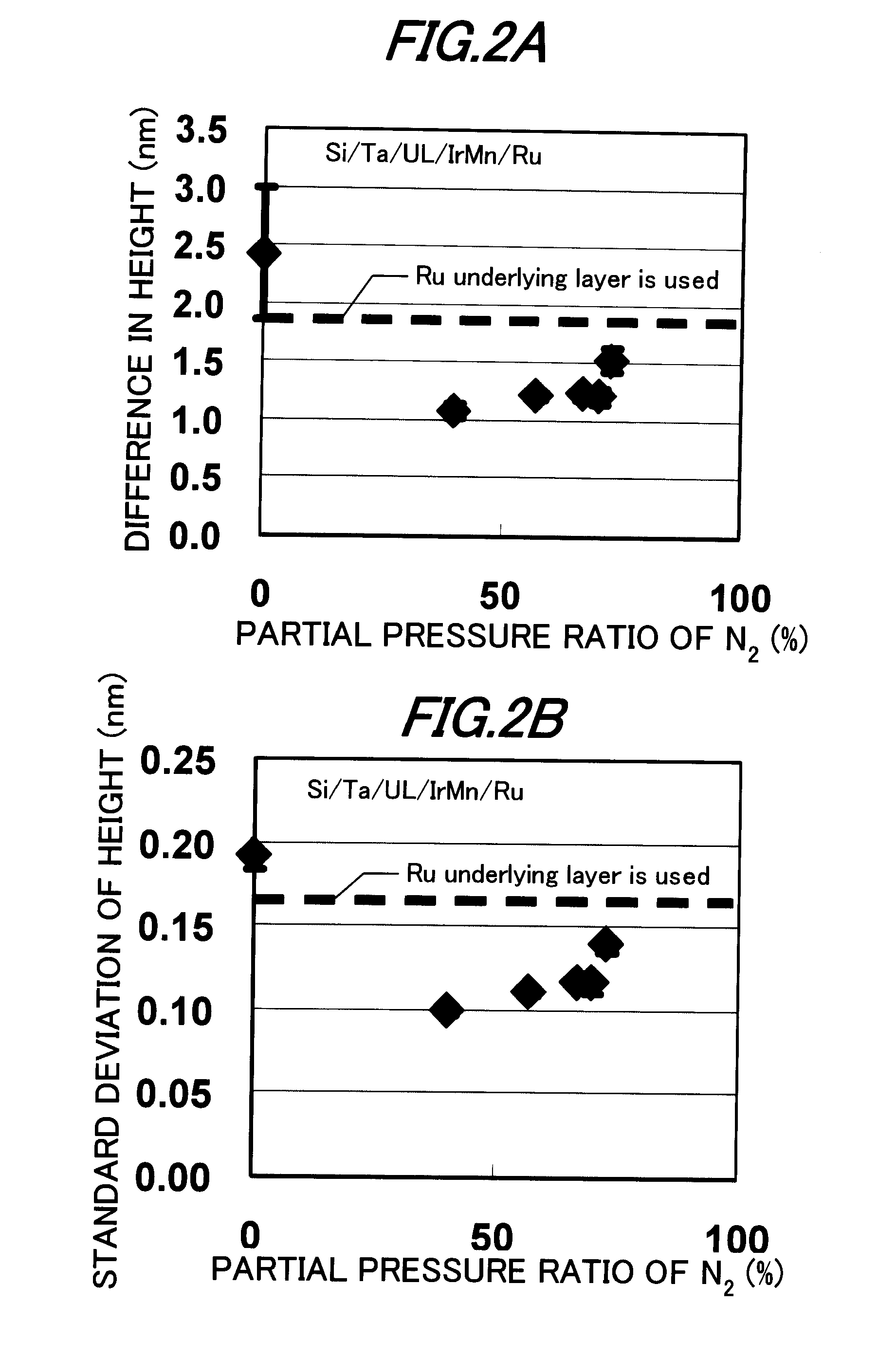Magnetoresistance effect device, magnetic lamination structural body, and manufacture method for magnetic lamination structural body
- Summary
- Abstract
- Description
- Claims
- Application Information
AI Technical Summary
Benefits of technology
Problems solved by technology
Method used
Image
Examples
first embodiment
[0045]FIG. 1 is a cross sectional view of a magnetoresistance effect device according to the On a support substrate 1, an underlying layer 2, a pinning layer 3, a pinned layer 4a, a nonmagnetic intermediate layer 4b, a reference layer 4c, a tunneling barrier layer (nonmagnetic layer) 7, a free layer 8 and a cap layer 9 are stacked in this order. For example, the support substrate 1 has a lamination structure that a NiFe layer and a Ta layer are laminated in this order on an Al2O3—TiC substrate.
[0046]The underlying layer 2 is made of NiFeN and has a thickness of 3 nm, for example. The NiFeN film can be formed by reactive sputtering using NiFe as a target and using Ar and N2 as sputtering gas. A target of Ni and Fe added with a third element may be used. A usable third element may be Co, Cr, Cu or the like. This film may be formed by cosputtering. The pinning layer 3 is made of IrMn and has a thickness of 7 nm, for example.
[0047]The pinned layer 4a is made of ferromagnetic material s...
second embodiment
[0064]FIG. 6A is a cross sectional view of a magnetoresistance effect device according to the Formed on a support substrate 1 are an underlying layer 2, a pinning layer 3, a reference layer 4c, a tunneling barrier layer 7, a free layer 8 and a cap layer 9 laminated in this order. The support substrate 1 has a structure that a Ta layer having a thickness of 3 nm is formed on a silicon substrate whose surface is etched to be planarized. The reference layer 4c is made of CoFe and has a thickness of 2.0 nm. The cap layer 9 has a three-layer structure that a Ta layer having a thickness of 5 nm, a Cu layer having a thickness of 10 nm and an Ru layer having a thickness of 10 nm are stacked in this order. The underlying layer 2, pinning layer 3, tunneling barrier layer 7 and free layer 8 each have the same structure as that of a corresponding layer of the magnetoresistance effect device shown in FIG. 1.
[0065]For the purposes of comparison, a sample was formed having the reference layer 4c ...
third embodiment
[0075]FIG. 8A is a front view of a face opposed to a recording medium of a magnetic head according to the An xyz orthogonal coordinate system is defined in such a manner that an xy plane is defined on the face opposed to a recording medium, x-axis is parallel to a trailing direction, y-axis is parallel to a track width direction, z-axis is perpendicular to the face opposed to a recording medium. FIG. 8B is a cross sectional view parallel to the zx plane of the magnetic head.
[0076]On a substrate 30, a reading element portion 20 and a recording element portion 40 are laminated in this order. The reading element portion 20 includes a lower magnetic shielding layer 22, a magnetoresistance effect film 21 and an upper magnetic shielding layer 23. The recording element portion 40 includes a main magnetic pole 41, a main magnetic pole auxiliary layer 42, an auxiliary magnetic pole 43 and a coupling portion 45. The main magnetic pole 41, main magnetic pole auxiliary layer 42, auxiliary magn...
PUM
| Property | Measurement | Unit |
|---|---|---|
| Thickness | aaaaa | aaaaa |
| Thickness | aaaaa | aaaaa |
| Thickness | aaaaa | aaaaa |
Abstract
Description
Claims
Application Information
 Login to View More
Login to View More - R&D
- Intellectual Property
- Life Sciences
- Materials
- Tech Scout
- Unparalleled Data Quality
- Higher Quality Content
- 60% Fewer Hallucinations
Browse by: Latest US Patents, China's latest patents, Technical Efficacy Thesaurus, Application Domain, Technology Topic, Popular Technical Reports.
© 2025 PatSnap. All rights reserved.Legal|Privacy policy|Modern Slavery Act Transparency Statement|Sitemap|About US| Contact US: help@patsnap.com



